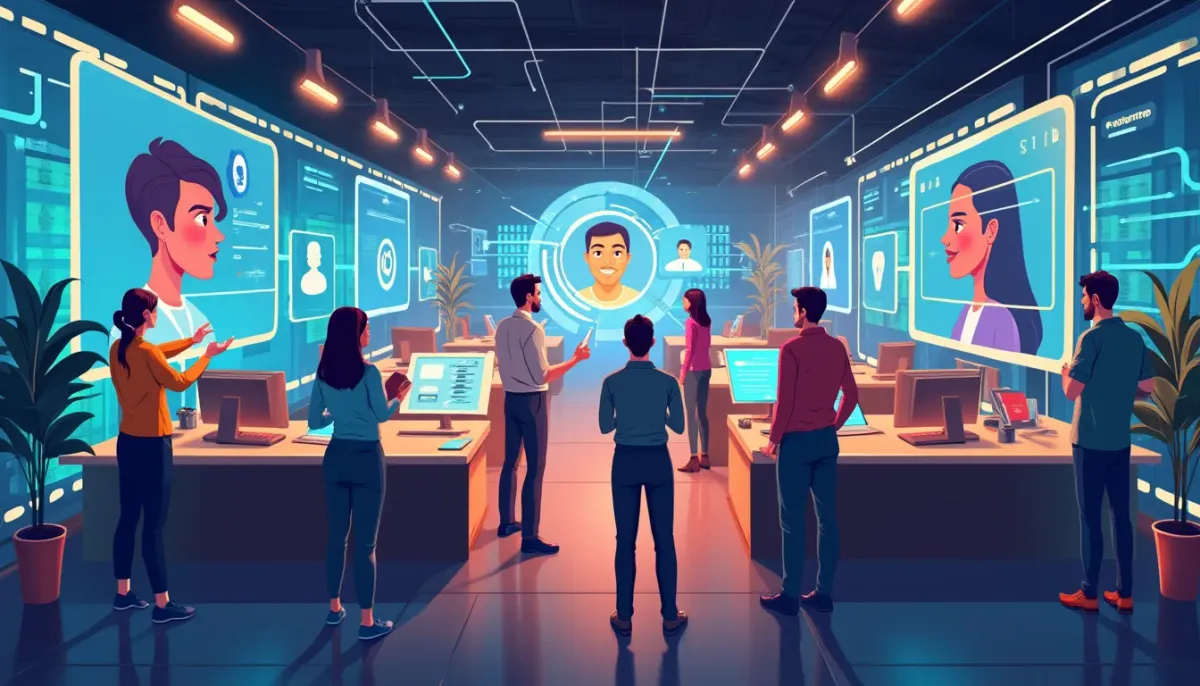Reflections on Sam Altman’s Vision: The Future of AI with GPT-4o
Sam Altman's *GPT-4o* highlights the transformative potential of AI for everyone.

Click HERE to read the original article.
In the ever-evolving landscape of artificial intelligence, few figures shine as brightly as Sam Altman, CEO of OpenAI and a beacon of innovation in the tech world. His latest article, GPT-4o, provides a captivating glimpse into the future of AI as well as the ambitious objectives that OpenAI aims to achieve by making sophisticated tools accessible to everyone. Through his writing, Altman expresses not only the technical advancements of AI but also the profound potential it possesses to impact ordinary lives positively.
OpenAI’s Mission: Democratizing AI
Altman underscores a cornerstone of OpenAI’s mission: to empower individuals with cutting-edge AI tools at little to no cost. He articulates, “A key part of our mission is to put very capable AI tools in the hands of people for free (or at a great price).” This objective resonates deeply with me; in an era where advanced technology is often locked behind exorbitant paywalls, the idea of democratizing access to powerful AI systems is revolutionary. Altman's vision mirrors a shared belief among tech enthusiasts that such tools can drive creativity and innovation across various sectors, from education to healthcare and beyond.
Reflecting on his words, I can’t help but consider what it means for a billion people to have access to these amazing resources. The potential to enhance human experience, bridge gaps in knowledge, and solve real-world problems is monumental. He hit the nail on the head by mentioning that while OpenAI has indeed created groundbreaking AI, it ultimately becomes more impactful when individuals and communities harness that power to craft their own unique solutions. This positive cycle of innovation contributes to a brighter future.
The Marvel of Voice and Video Modes
In addition to discussing accessibility, Altman’s excitement about the new voice and video mode caught my attention. Describing it as “the best computer interface I’ve ever used,” Altman shares a transformative experience that many share, where utilizing AI feels genuinely natural for the first time. In a world where the barrier to interaction often felt like a gaping chasm, the advancement of human-level expressiveness brings a new level of connection between humans and machines. As someone who has navigated various AI tools and platforms, I can wholeheartedly agree with his sentiment; the interaction models have drastically changed in feeling from clunky to fluid.
The moment he notes, “it’s still a bit surprising to me that it’s real,” reflects a collective consciousness of awe and disbelief at how quickly technology can leap forward. This astonishment is not just about the functionality of AI; it speaks to our imagination, the possibilities unlockable through imaginative engagement. The idea that engaging with a computer can become akin to conversing with a friend heralds a pivotal shift in interface design and user experience.
Embracing Personalization and Future Capabilities
Altman’s anticipation of personalization in AI experiences also resonates with me profoundly. The integration of personalized AI that remembers our preferences and acts on our behalf is not just a luxury; it’s a necessity in streamlining our increasingly complex lives. The thought of having AI act as an intermediary that understands my needs, preferences, and context not only enhances productivity but also enables deeper engagement with technology in a meaningful, human-centered way.
As we advance toward this future, there’s an inherent excitement about the diverse applications of AI, from personal assistance to creative expression, that await us. Altman's foresight encourages us to imagine the breadth of experiences that can be created with a tool that can learn from us, from honest interactions to tailored solutions that elevate our everyday existence.
Acknowledgment for the Team
Lastly, Altman gives heartfelt gratitude to the team behind these advancements. This emphasis on teamwork and collaborative effort really stands out to me. It is a reminder that individuals and communities working together can forge ideas and technologies beyond what any one person could achieve alone. Such acknowledgment also hones in on a crucial aspect of technological development: it is the dedication, talent, and creativity of team members that breathe life into visionary concepts like those presented in GPT-4o.
Conclusion: A Future Abundant with Possibilities
As I ponder over Sam Altman’s insights, I feel hopeful for the future. The narrative he presents in GPT-4o isn't just about technology; it’s about human potential. In pursuing an AI landscape aiming for inclusivity and personal connection, we step into a future where interactions with technology are not just functional but also profoundly human.
I sit with the conviction that we’re just beginning to scratch the surface of what’s possible, and I, for one, cannot wait to see how this journey unfolds. The era of AI is upon us, and it’s up to us—each and every one of us—to shape that future positively.
Sam Altman's visionary perspective, achievements, and commitment to making powerful AI accessible for all truly merit our appreciation, recognition, and desire to engage with the advancements in meaningful ways. It's thrilling to think of the tools on the horizon and the lasting impact they will have on our lives.
Midjourney prompt for the cover image: A futuristic AI interaction scene with a diverse group of people engaging with advanced voice and video interfaces. The setting is a bright, modern workspace filled with digital screens displaying AI responses. Unique details include holographic projections and personalized AI avatars assisting users. The style is vibrant and optimistic, capturing the wonder and excitement around AI technology.

